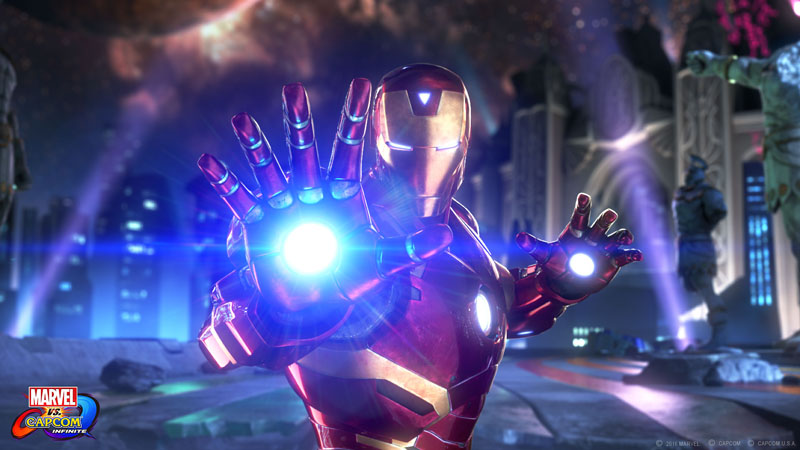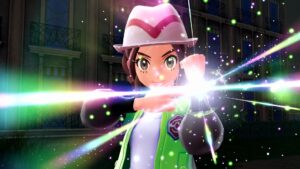
Let’s get something out of the way right off the bat- if you’re a veteran fan of fighting games and are looking for a deep, challenging game with complex mechanics to be mastered, Marvel vs Capcom: Infinite is going to disappoint you. This is a game that is decidedly more streamlined in everything it tries to do, and many of the changes that Capcom have made might not sit well with fans of the series and the genre. But if you’re able to look past that, or if you’re someone who’s just interested in playing the game because you’re looking for a good, fun time, then Infinite is the game for you.
That contrast is apparent more than anywhere else in the moment-to-moment gameplay in Infinite, which, thanks to the game’s overarching efforts to be more accessible than its predecessors, is much more streamlined than what you’d expect. Everything from the controls to the combos has been made much simpler, so that even people who are not too familiar with the ins and outs of the genres can get into the game without too much effort or practice. For instance, using special attacks, countering attacks, or even chaining combos now takes two buttons presses at most.
But there are other things Marvel vs Capcom: Infinite does to add complexity to its fighting mechanics. One of the biggest changes Infinite makes is having 2v2 fights rather than the three on three battles that the series has traditionally featured, and a side effect of that is that you can tag your characters in and out of battles at any time. Granted, this means that Assists no longer figure into the gameplay anymore, but the ability to switch your characters in and out at any given time lets you bring your characters into play in different ways.
"Everything from the controls to the combos has been made much simpler, so that even people who are not too familiar with the ins and outs of the genres can get into the game without too much effort or practice."
This mechanic adds a certain level of strategy to how you approach each fight, since you always have to be careful about managing the health of both characters. What’s more, this tag-anytime mechanic allows you to chain together some excellent, bombastic multi-character combos as well. This Active Switch mechanic can, in fact, also be used for defensive purposes, allowing you to switch in an out even while airborne or in the middle of attacks. It is a mechanic that makes for faster, more frantic, and more chaotic fights.
Infinity Surge is another big addition to the gameplay in Infinite. Players are now able to use one of the six Infinity Stones in the middle of a battle, and each of these provides specific abilities or boosts, depending on which one you’re using. For instance, while the Time Stone gives you the ability to dash across small distances at great speed, another increases your attack power and unleashes a powerful attack on your enemies. What really makes this mechanic stand out, though, is figuring out what Surge works best for which character.
Characters like Ghost Rider and Spider-Man are already pretty quick, but using the Time Stone as Hulk can prove to be a devastating combination, allowing you to dash across the screen to your enemies to unleash strong, powerful attacks and combos. But using the Power Stone as Hulk is pointless, so you might want to save that for characters such as Arthur. I’ve spent a lot of time tinkering with these combinations, and while Infinite’s fighting itself often feels simplistic at times, the Infinity Surge mechanic provides a surprising amount of depth.
Whether or not all of the changes that Marvel vs Capcom: Infinite has made appeal to you depends on just how familiar you are with the fighting genre. This is a game that tries to trim away the fat and streamline many of its mechanics in its attempt to become more accessible to wider audiences, and these changes definitely result in a game that is much shallower than its competitors, or even its predecessors. But these changes also make for a bombastic, chaotic and enjoyable experience. That said, you’re likelier to get bored of the bombastic chaos quicker than you would get bored with a fighter than has more depth in its mechanics.
"This is a game that tries to trim away the fat and streamline many of its mechanics in its attempt to become more accessible to wider audiences, and these changes definitely result in a game that is much shallower than its competitors, or even its predecessors. But these changes also make for a bombastic, chaotic and enjoyable experience."
Speaking of big changes, unlike its predecessors and even other games in the fighting genre, such as Capcom’s own Street Fighter 5, Marvel vs Capcom: Infinite places a lot of emphasis on its story mode. But in a year where fellow fighting game Injustice 2 had such a compelling and engrossing single player story, Infinite’s story mode feels almost incomplete and rushed. That’s not to say it’s all bad. Thanks to the game’s very nature, it’s fun to see these characters from different universes teaming up and fighting against each other, but the story itself which serves as the foundation for that is riddled with issues.
Characters from both universes are constantly being paired up with each other throughout Infinite’s story mode, but these moments rarely have the kind of payoff or fan service moments you would expect them to have. This is thanks to shoddy writing, where interaction between characters devolves into constantly cringe-y banter and flat and humourless quips and one liners. Of course, some characters manage to rise above that, such as Iron Man or Spider-Man, but that is more because of who and what they are than how they’re written. Additionally, for all the focus Infinite places on its story, you’d expect its narrative to make some kind of sense, which it rarely does. The main goal of the story is very clearly to have different characters meeting with each other and fighting with and against each other, and that is almost always obvious. Infinite’s story never tries to create any moments or scenarios worth investing any thought into.
Is the addition of a story mode appreciated? Sure it is. More content is never a bad thing, and regardless of how bad the writing is or how uninteresting the narrative is, the act of fighting itself is inherently enjoyable. So while you probably won’t care much about how the story unfolds, you will still keep on playing, just because the fighting itself in the game is so enjoyable, and because seeing all the team ups and face offs in action never gets old.
Outside of the story mode, Marvel vs Capcom: Infinite is brimming with content, even though most of it is pretty routine for a fighter. Other than the ranked and unranked online matches, the real standout is the Arcade mode, which sees you progressing through fights until you finally square off against a boss character, and for people who’re looking for a classic arcade fighter experience, this mode is an absolute delight. You can spend hours upon hours in this mode without ever having touched any other, and other than the story mode itself, this is probably where you will spend the bulk of your time when you’re not playing online.
"Outside of the story mode, Marvel vs Capcom: Infinite is brimming with content, even though most of it is pretty routine for a fighter."
One of the more disappointing ways in which Infinite is a decided step back from the previous games in the series is the roster. The lineup here is greatly truncated, which is especially disappointing when compared to the competition, or the series’ own rich heritage. Several iconic characters missing from the roster, such as an inclusion as obvious as the X-Men, simply in some corporate mandated attempt to focus on the MCU. Given how important the X-Men have been to the series through the years- it started as X-Men vs Street Fighter after all- this is especially disappointing. Sure, there will be character DLCs in the future that will add to the game’s existing roster, but it makes no sense to hold back so many important and fan-favourite characters to begin with.
On the technical side of things, Infinite stumbles quite a lot. Lip syncing is often hilariously bad, which does the already poor writing no favours at all, and when things on the screen get too chaotic or too busy, the frame rate often stutters, breaking the immersion and ruining the flow of the fight. The visual aesthetic itself is bland and uninspired, and character animations are often choppy and rough, especially in some of the cutscenes.
If you’re looking for a fighter that can pull you away from something like Tekken 7 or Street Fighter 5, Marvel vs Capcom: Infinite is going to disappoint you. In its drive to become more accessible, Infinite has become a much different game than what fans of the series might be used to, and the changes that it makes probably won’t sit well with you if you’ve been a fan of the fighting genre for a long time. But regardless of that, this is still an enjoyable, flashy experience with chaotic fights and mechanics that are easy to get into.
This game was reviewed on the PlayStation 4.
Lots of content; Fighting itself remains largely enjoyable; Ability to switch characters in and out on the fly makes for frantic and fast-paced battles; Infinity Surge mechanic adds a much needed layer of depth and complexity; You can spend hours playing the Arcade mode.
Bad writing makes for an uninteresting narrative; Gameplay becomes somewhat simnplistic in its attempt to become more accessible; Frame rate is unstable when on-screen action gets too frantic; Minor technical issues; Bland visual aesthetic; Relatively smaller roster that lacks numerous iconic characters.



















